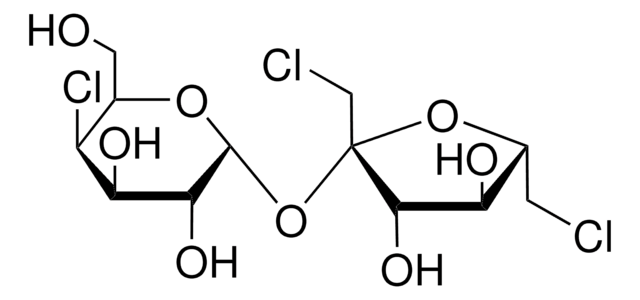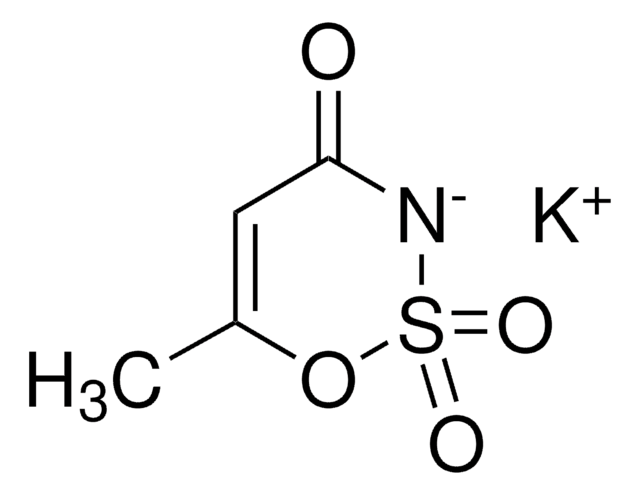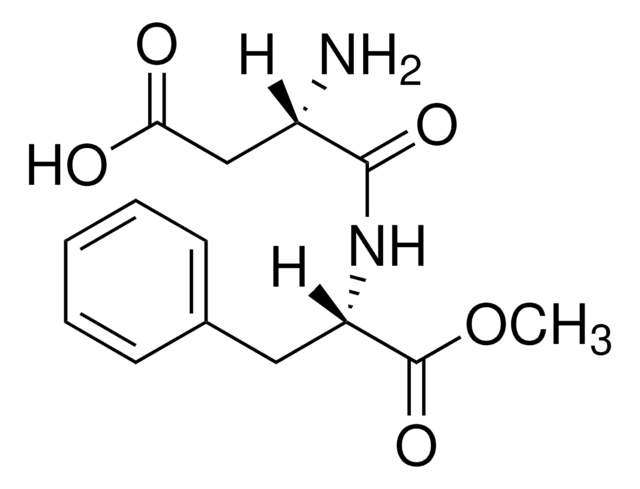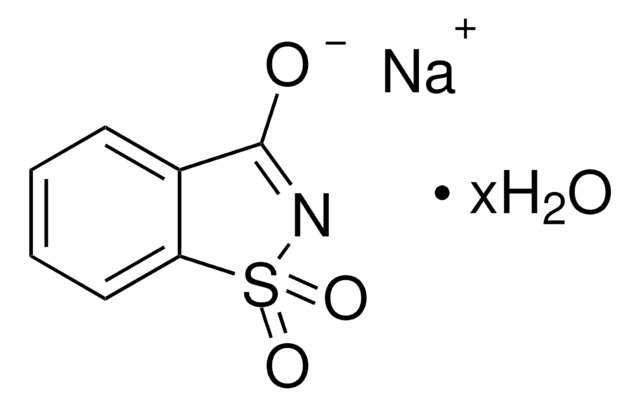推荐产品
等級
pharmaceutical primary standard
API 家族
saccharin
製造商/商標名
EDQM
mp
226-229 °C (lit.)
應用
pharmaceutical (small molecule)
格式
neat
儲存溫度
2-8°C
SMILES 字串
O=C1NS(=O)(=O)c2ccccc12
InChI
1S/C7H5NO3S/c9-7-5-3-1-2-4-6(5)12(10,11)8-7/h1-4H,(H,8,9)
InChI 密鑰
CVHZOJJKTDOEJC-UHFFFAOYSA-N
正在寻找类似产品? 访问 产品对比指南
一般說明
This product is provided as delivered and specified by the issuing Pharmacopoeia. All information provided in support of this product, including SDS and any product information leaflets have been developed and issued under the Authority of the issuing Pharmacopoeia.For further information and support please go to the website of the issuing Pharmacopoeia.
應用
Saccharin EP Reference standard, intended for use in laboratory tests only as specifically prescribed in the European Pharmacopoeia.
生化/生理作用
哺乳动物的甜促味剂。有人提出,果蝇具有葡萄糖特异性甘油味觉受体结合位点。
包裝
The product is delivered as supplied by the issuing Pharmacopoeia. For the current unit quantity, please visit the EDQM reference substance catalogue.
其他說明
Sales restrictions may apply.
相關產品
产品编号
说明
价格
儲存類別代碼
11 - Combustible Solids
水污染物質分類(WGK)
WGK 2
閃點(°F)
Not applicable
閃點(°C)
Not applicable
The toxicological effects of saccharin in short-term genotoxicity assays.
D L Arnold et al.
Mutation research, 221(2), 69-132 (1989-09-01)
M D Reuber
Environmental health perspectives, 25, 173-200 (1978-08-01)
Saccharin is carcinogenic for the urinary bladder in rats and mice, and most likely is carcinogenic in human beings. The neoplasms of the urinary bladder are malignant and invade and metastasize. Male rats are more susceptible to urinary bladder carcinogenesis
J Whysner et al.
Pharmacology & therapeutics, 71(1-2), 225-252 (1996-01-01)
Sodium saccharin (NaSac) produces bladder tumors consistently in male rats only after lifetime exposure that begins at birth. NaSac is not metabolized and is negative in most genotoxicity tests. NaSac-induced cell damage and proliferation have been proposed as important factors
Marilyn E Carroll et al.
Behavioural pharmacology, 19(5-6), 435-460 (2008-08-12)
A positive relationship between the consumption of sweetened dietary substances (e.g. saccharin and sucrose) and drug abuse has been reported in both the human and other animal literature. The proposed genetic contribution to this relationship has been based on evidence
L B Ellwein et al.
Critical reviews in toxicology, 20(5), 311-326 (1990-01-01)
Almost from its discovery in 1879, the use of saccharin as an artificial, non-nutritive sweetener has been the center of several controversies regarding potential toxic effects, most recently focusing on the urinary bladder carcinogenicity of sodium saccharin in rats when
我们的科学家团队拥有各种研究领域经验,包括生命科学、材料科学、化学合成、色谱、分析及许多其他领域.
联系技术服务部门




